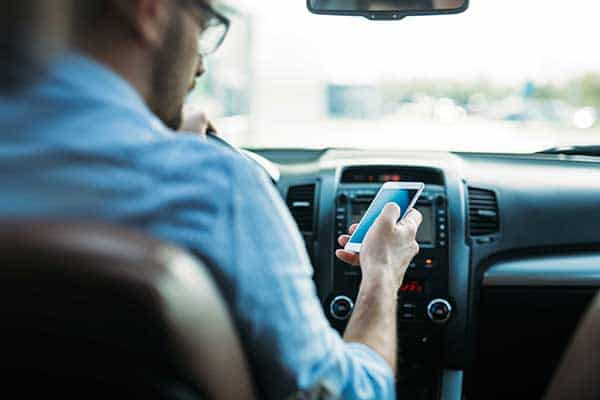
Before you read this article any further, I encourage you to take a minute and play an online game. You can find it here: https://www.justpark.com/creative/reaction-time-test/.
How did you do? What was your reaction time “age” when driving? While I was trying to improve my “score” by having my fingers at the ready to click on my keyboard, I still had the reaction time of a 46-year-old. That’s actually one year older than my actual age.
While it’s certainly not a scientific tool, this game brings up an important issue that was taking place all throughout 2020, and that only now we can take a look back and measure. Specifically, it is the issue of distracted driving during the Covid 19 pandemic. Many of you and your patients have likely experienced a perceptible increase in erratic and sometimes increasingly dangerous driving behavior over the past year. This is a central issue in many legal cases in which a patient is injured in a motor vehicle collision. Often times, experts are retained in order to provide data on the role that distracted driving plays in reaction time behind the wheel of a vehicle. For example, a Collision Reconstruction Specialist can use mathematical formulas to determine that although a particular vehicle traveling at 60 mph is capable of stopping over a distance of 120 to 140 feet, this does not take into account human factors such as age, reaction time, and driver distractions. When these factors are taken into account, the same vehicle may take almost 7 seconds to stop and cover more than a football field in distance during that time.[1] If a driver is distracted, their reaction time, time to stop, and distance to stop can be even greater. Given these troubling statistics, is it any wonder that every country in the European Union has banned the use of cell phones while operating a motor vehicle?[2]
A new study has found that distracted driving actually skyrocketed in 2020 in the U.S., despite there being fewer motor vehicles on the road in the Covid 19 pandemic.[3] The study, conducted by mobility analysis firm Zendrive found that of the 86,000 motor vehicle collisions studied in 2020, drivers were actively using their cell phones within 60 seconds of impact 27% of the time. Additionally, almost 17% of drivers were actively using their cell phones in the five seconds immediately before impact. The study goes on to note that driving while using a mobile device reduces brain activity necessary for driving by 37%. Engaging with a social network while driving results in the slowest reaction time for drivers at almost 38%, followed very closely by texting. Sending or receiving a text takes a driver’s eyes off of the road for an average of 4.6 seconds, enough time for a vehicle going 70 mph to travel a distance of 12 city buses lined up in a row. Even using a cell phone for a hands-free mobile conversation slows driver reaction time by 26.5%. By comparison, driving under the influence of cannabis also slows driver reaction time by 26.5%, while driving under the influence of alcohol at the legal limit slows reaction time by 12.5%.
Interestingly, the study found that Seattle ranked among the top five cities with the lowest phone use behind the wheel, and with the lowest speeding while distracted. Despite this optimistic statistic, most, if not all care providers in and around Seattle will have likely provided care for patients traumatically injured in motor vehicle collisions in which distracted driving was a factor, signaling that distracted driving was still a significant problem in 2020 in the Pacific Northwest. One less optimistic statistic comes from the National Safety Council, which estimates that 42,060 people died in motor vehicle collisions in the U.S. in 2020, an 8% increase over 2019, despite there being fewer vehicles on the road.[4]
While Washington State has not yet taken the radical step of banning cell phone use while operating a motor vehicle, there are ways in which healthcare providers can help change patient behavior for the better. Patients can be asked to rate themselves on history forms by assessing their driving habits in addition to other measured health risk factors such as exposure to domestic abuse, drug use, alcohol use, and the presence of firearms in the home. Teenage drivers are particularly at risk for distracted driving, and do not have the experience of a 46-year-old driver, despite having faster reaction times. Parents are encouraged to consider the use of in-phone applications that can monitor when a cell phone is in use while a vehicle is in motion. A list of top applications can be found here: http://bit.ly/TeenAppSafety.
